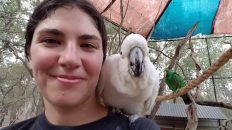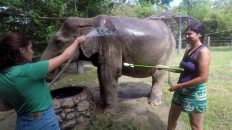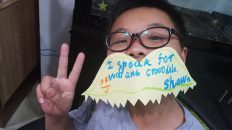“If you were to stop and pay attention every moment of every day, you would have the option to notice your mistakes, regrets, and screw ups. Or, if you are wise, you can pay attention to who you are becoming, who you choose to be, and how you want to touch the world.” – Reverend Michelle Wadleigh
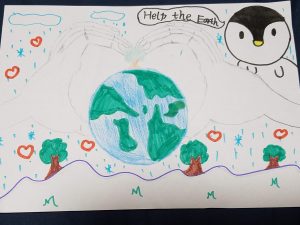 Every day, we are given many choices – from which toothpaste we want to use, what shirt to wear, to what job we want to apply for. Since beginning this journey, more of my daily conscious has been dedicated to asking, “How is this choice benefitting the planet?” before making a choice.
Every day, we are given many choices – from which toothpaste we want to use, what shirt to wear, to what job we want to apply for. Since beginning this journey, more of my daily conscious has been dedicated to asking, “How is this choice benefitting the planet?” before making a choice.
No, I am far from perfect. I still have my slip-ups, every day. But I am aware of them, and that is the first step to creating new habits.
I didn’t know that this was a thing, but there is such a thing as plant-based plastics! It can be used for wrappers, and there is even plant based cement used for housing. Even the plastic we [hopefully] recycle can be made into cool things like roadways, but all plastic should switch immediately to being plant based, because not only is it better for the environment, but it breaks down in a matter of months instead of 1,000 years. So that means less human trash that gets filled in birds, fish, and turtles tummies.
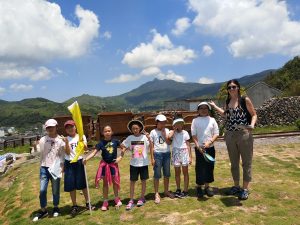 A lot of my close friends tag me in posts about straw bans. I was never super excited about it, but hey – we have to start somewhere, right? Until I learned that these bans didn’t include a safe, or even an innovative alternative to straws to people who actually NEED them. Do you know how bad glitter is for the environment? Or those foil balloon things that NEVER break down? What about the fact that, since Starbucks has banned straws in their coffees (at least in the USA, that ban hasn’t reached China yet) they are using and disposing of MORE oil-based plastic than actually using a straw?
A lot of my close friends tag me in posts about straw bans. I was never super excited about it, but hey – we have to start somewhere, right? Until I learned that these bans didn’t include a safe, or even an innovative alternative to straws to people who actually NEED them. Do you know how bad glitter is for the environment? Or those foil balloon things that NEVER break down? What about the fact that, since Starbucks has banned straws in their coffees (at least in the USA, that ban hasn’t reached China yet) they are using and disposing of MORE oil-based plastic than actually using a straw?
When we think about things to ban, we should start with the BIG things, and give incentives to people, like science organizations, high schools, and universities, whose ideas can be breakthroughs and include people of all abilities and inabilities.
In this awareness journey, I have been learning about a few tools that can help individuals make conscious choices. First, if you believe that everyone should be treated and given fair working conditions, and still use Amazon – you should not support them. Recently, I learned that Amazon’s working conditions are deplorable; so much that even a Navy veteran could not handle the stress and painful agony of working there.
When I went to this leadership retreat through the Center for Spiritual Living , one of the reverends talked about our purchases, and how every purchase we make, we are saying “I want more of this.” And if we don’t agree with something that is happening in the world, we should say that with what we buy. That is how I found the Buycott app. This app lets you scan anything you buy, and it will inform you of what the company supports, positive and negative. You “vote with your wallet.” So if you don’t want to purchase anything Monsanto makes, download this app. If you are against child labor or sex slavery or believe that Native Americans should keep their sacred land without pipelines being built on it, download this app.
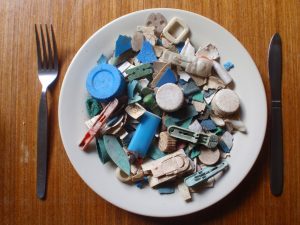 I have also discussed how wonderful the Litterati app is, and will do so again. This is a wonderful, fun way to get children and adults thinking about trash in their area. We can say “Oh, look, that is so horrible. What a terrible person that is to have left that there.” Or we can do something about it, like pick it up. Then, we can also make others aware of this terrible habit, and take a picture of the trash you pick up.
I have also discussed how wonderful the Litterati app is, and will do so again. This is a wonderful, fun way to get children and adults thinking about trash in their area. We can say “Oh, look, that is so horrible. What a terrible person that is to have left that there.” Or we can do something about it, like pick it up. Then, we can also make others aware of this terrible habit, and take a picture of the trash you pick up.
Litterati geotags and uses hashtags to create a database that is basically Google Maps for litter. In San Francisco, they were actually able to use the data from Litterati to tax cigarette companies, and the profit is used to help clean the city. Can you imagine how much change we could make if we found all the litter from fast food companies around an area, and used Literatti data to make the companies aware of the trash they create?
We know we are not perfect, but it is important to strive to learn how to be better and change our habits, especially our consumer habits. I am who I CHOOSE to be: a positive light in the world that helps planet Earth. I choose to put my money where it can support the planet.
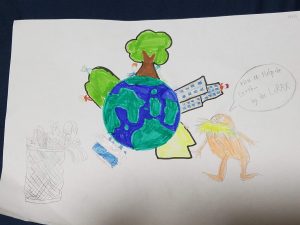 This is what the second half of my Zero Waste class was all about. So we have learned how horrible this waste issue is, what can we do about it in our individual lives? The above video is one of the end projects we did in class – I wrote a script inspired by our class book “How to Help the Earth, by the Lorax” and the students read and practiced it. Once they memorized their lines, I recorded them and edited the video. They also drew large pledges and hung them in the Big Room of our school so other students (and they) could have a reminder of the importance of reducing their waste.
This is what the second half of my Zero Waste class was all about. So we have learned how horrible this waste issue is, what can we do about it in our individual lives? The above video is one of the end projects we did in class – I wrote a script inspired by our class book “How to Help the Earth, by the Lorax” and the students read and practiced it. Once they memorized their lines, I recorded them and edited the video. They also drew large pledges and hung them in the Big Room of our school so other students (and they) could have a reminder of the importance of reducing their waste.
Education, and spreading knowledge – it’s important, so do it!
Lesson: The Individual Impact and How to Help the Earth
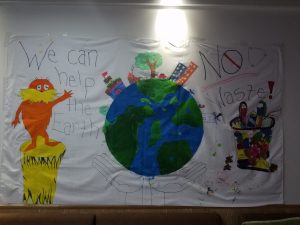 Objective: You will learn, list, and do various simple actions to help reduce waste in your own life. You will read and learn lines of a script to help the Earth, and create a pledge to remind yourself and others of the importance of reducing your waste impact.
Objective: You will learn, list, and do various simple actions to help reduce waste in your own life. You will read and learn lines of a script to help the Earth, and create a pledge to remind yourself and others of the importance of reducing your waste impact.
Vocabulary: refuse, reduce, reuse, rot, recycle
Essential questions:
- Why is plastic bad for the environment?
- What habits will you change to help the Earth
Book: How to Help the Earth by the Lorax, by: Trish Rabe
Materials:
- SMARTboard, or something that plays videos
- How to Help the Earth book
- Video recording capability
- A large sheet, or some kind of poster (reusable/upcycled preferred)
- Upcycled paper (use both sides and save paper!)
- Writing utensils (colored pencils, fabric markers, etc.)
- Butterfly Printout (for the last lesson)
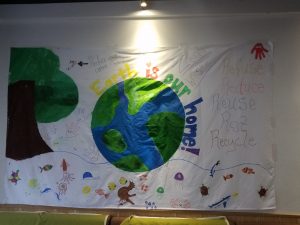 Procedure:
Procedure:
I thoroughly enjoy creating video projects with the students. It is creative, entertaining, and a fun way to engage the kids in a topic, like spreading awareness to help the planet. I have done various videos previously, and showed my students a few examples, like last years Public Service Announcement, or PSA, about Plastic Waste. I also showed them the video/skit I did with my little cousins and their friends about smog and changing the practices of big corporations and factories, called King Smog vs. the Loraxes and the Earth inspired music video to Justin Beieber’s “Sorry” titled “Sorry Earth”.
No matter what the project, I want to make sure that the students have a say in it, so their creativity comes through. They are wonderful artists, so before making our large pledge, they each drew a small version on a sheet of recycled paper. We discussed what we liked about all of the pictures, and put them together for the large pledge. I wrote the script (attached in above materials) and had the students practice their lines in the beginning of each class. Once they had them memorized, I would take them out – 1 at a time or in a small group of 2 or 3 – of the classroom and into various environments around the school to film. The other students would be drawing and coloring the large pledge while this was done.
In my previous post, I had students make upcycled bags out of tshirts. That was a precursor to learning how to draw on fabric, which is what the large pledges were made from – large white fabric. I felt that it was important for them to practice writing on fabric, since it was very different to writing on paper. We painted the large portions of the pledge, like the earth or tree, but the other smaller pictures and phrases were done using fabric marker. We also had each student draw their hand print on the pledge with their name on it – as a reminder for them to help the earth, and as a resource for other students to ask them questions.
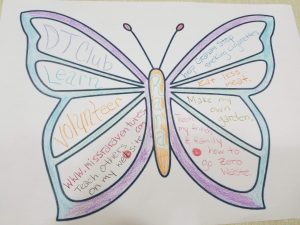 At the end of the project, I also wanted them to reflect on what they learned and what would they be doing moving forward. I explained to them the concept of a ‘butterfly effect’, where on small act will create a ripple that is very big. We filled in our butterfly page with people and groups we would talk to and inform them how important it was to help the Earth. Then, they wrote 1-2 paragraph speeches on the back of the activity sheet and read them aloud to the other students at our school. That was done when we had our ‘release party’ for the video.
At the end of the project, I also wanted them to reflect on what they learned and what would they be doing moving forward. I explained to them the concept of a ‘butterfly effect’, where on small act will create a ripple that is very big. We filled in our butterfly page with people and groups we would talk to and inform them how important it was to help the Earth. Then, they wrote 1-2 paragraph speeches on the back of the activity sheet and read them aloud to the other students at our school. That was done when we had our ‘release party’ for the video.
I hope this, and all of my lessons, can be of use to others to educate others on the importance of helping our planet. If you have any questions on how these lessons were done, please feel free to ask me!


